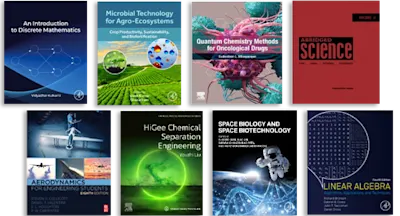
Fracture of Structural Steel Elements
High-Temperature Creep and Hydrogen Influence
- 1st Edition - November 1, 2025
- Authors: Maciej Dutkiewicz, Oleksandr Andreykiv, Oksana Hembara, Iryna Dolinska, Olha Chepil
- Language: English
- Paperback ISBN:9 7 8 - 0 - 4 4 3 - 2 7 5 8 2 - 1
- eBook ISBN:9 7 8 - 0 - 4 4 3 - 2 7 5 8 3 - 8
Fracture of Steel in Energy Machine Parts: High-Temperature Creep and Hydrogen Influence outlines modeling approaches for determining the effects of high-temperature creep, hydrog… Read more

Fracture of Steel in Energy Machine Parts: High-Temperature Creep and Hydrogen Influence outlines modeling approaches for determining the effects of high-temperature creep, hydrogen diffusion, damage accumulation, and creep development in steam pipelines, steam turbine discs, heat exchange pipes, and steam boiler drums. The book starts by discussing the strength and durability of metallic materials and structural elements at volumetric damage, then at local damage, and finally at the end of residual life. It then presents models and algorithms for simulating the flow of these different phenomena (high-temperature creep, hydrogen diffusion, damage accumulation, and creep development) that occur at different speeds at different points in the volume of a structure. Different types of cracks are covered, including through cracks, internal cracks, surface cracks, and elliptical cracks.
- Presents computational models for evaluating the effects of creep, hydrogen, and high-temperatures on steel energy components
- Describes the kinetics of damage accumulation and crack growth
- Covers through cracks, internal cracks, surface cracks, and elliptical cracks
Researchers and advanced students in mechanical engineering, metallurgy, civil engineering, materials science, and mechanics of materials
1. An Energetic Approach to Modeling Damage Accumulation Under Creep and Hydrogen Action
2. Evaluation of the Effect of Hydrogen on Damage Accumulation in the Bridgman Specimen Under High-Temperature Creep
3. Calculation Model of High-Temperature Creep Crack Propagation and Subcritical Growth
4. Determination of the Period of Precritical Growth of High-Temperature Creep Cracks
5. Application of the Method of Equivalent Areas to Estimate the Period of Precritical Growth of High-Temperature Creep Cracks in a Three-Dimensional Body
6. Kinetics and Period of Precritical Growth of an Elliptical High-Temperature Creep Crack
7. Mathematical Model for Evaluating the Influence of Hydrogen-Containing Environments on the Period of Precritical Growth of a High-Temperature Creep Crack
8. Determination of the Residual Durability of a Plate with a System of Cracks Under the Action of a Long-Term Static Load, a Hydrogen-Containing Environment, and High Temperature
9. Calculation of the Residual Resource of Steam Turbine Elements
10. Estimation of the Residual Resource of the Steam Pipeline Taking into Account Conditions of Long-Term Operation
11. Evaluation of the Effect of Metal Flooding and Creep on the Durability of the Straight Section and the Depth of the Heat Exchange Pipes of the Horizontal Steam Generators of a Nuclear Power Plant
12. Calculation of the Resource of Safe Operation of the Drum of a Steam Boiler Under High-Temperature Creep and the Action of Hydrogen
2. Evaluation of the Effect of Hydrogen on Damage Accumulation in the Bridgman Specimen Under High-Temperature Creep
3. Calculation Model of High-Temperature Creep Crack Propagation and Subcritical Growth
4. Determination of the Period of Precritical Growth of High-Temperature Creep Cracks
5. Application of the Method of Equivalent Areas to Estimate the Period of Precritical Growth of High-Temperature Creep Cracks in a Three-Dimensional Body
6. Kinetics and Period of Precritical Growth of an Elliptical High-Temperature Creep Crack
7. Mathematical Model for Evaluating the Influence of Hydrogen-Containing Environments on the Period of Precritical Growth of a High-Temperature Creep Crack
8. Determination of the Residual Durability of a Plate with a System of Cracks Under the Action of a Long-Term Static Load, a Hydrogen-Containing Environment, and High Temperature
9. Calculation of the Residual Resource of Steam Turbine Elements
10. Estimation of the Residual Resource of the Steam Pipeline Taking into Account Conditions of Long-Term Operation
11. Evaluation of the Effect of Metal Flooding and Creep on the Durability of the Straight Section and the Depth of the Heat Exchange Pipes of the Horizontal Steam Generators of a Nuclear Power Plant
12. Calculation of the Resource of Safe Operation of the Drum of a Steam Boiler Under High-Temperature Creep and the Action of Hydrogen
- Edition: 1
- Published: November 1, 2025
- Language: English